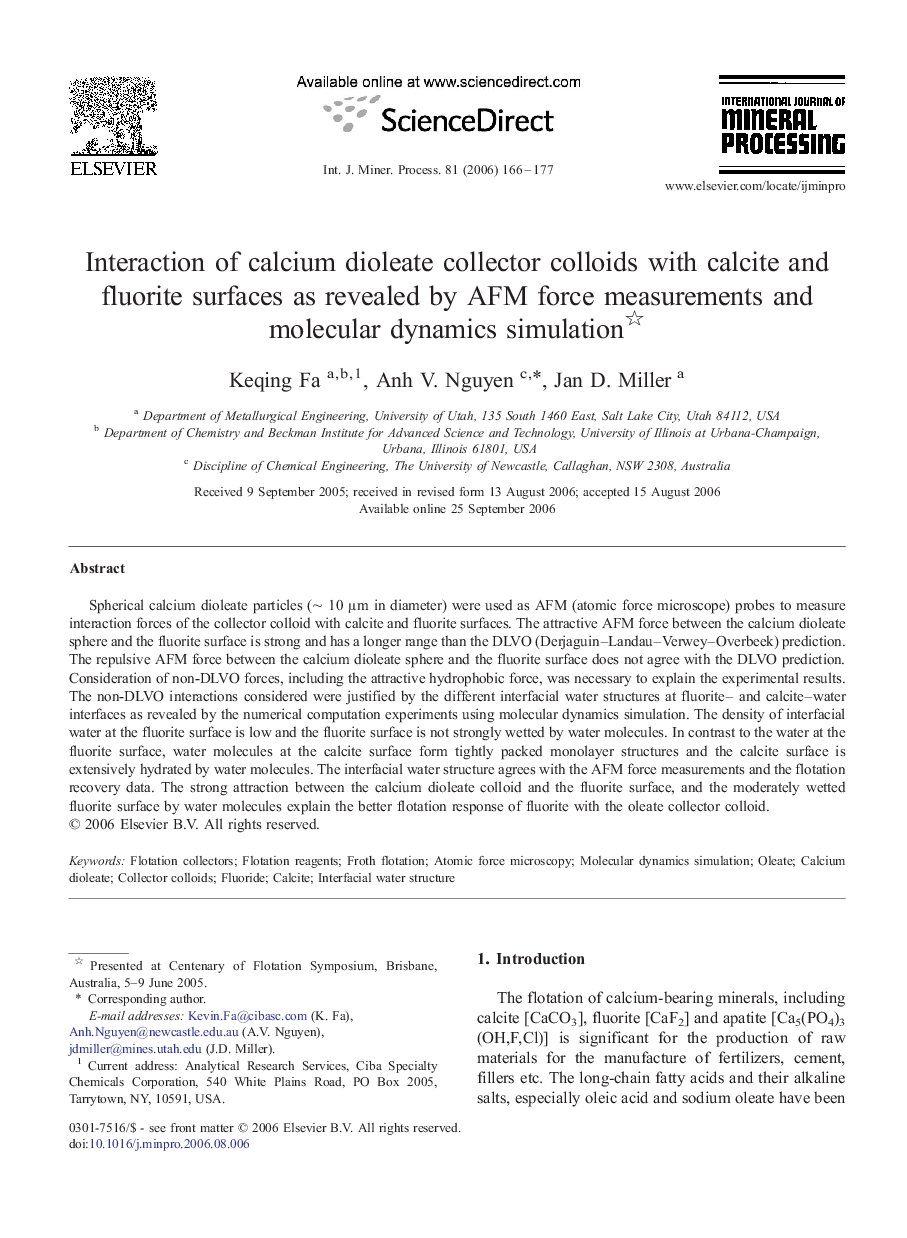| Article ID | Journal | Published Year | Pages | File Type |
|---|---|---|---|---|
| 214647 | International Journal of Mineral Processing | 2006 | 12 Pages |
Spherical calcium dioleate particles (∼ 10 μm in diameter) were used as AFM (atomic force microscope) probes to measure interaction forces of the collector colloid with calcite and fluorite surfaces. The attractive AFM force between the calcium dioleate sphere and the fluorite surface is strong and has a longer range than the DLVO (Derjaguin–Landau–Verwey–Overbeek) prediction. The repulsive AFM force between the calcium dioleate sphere and the fluorite surface does not agree with the DLVO prediction. Consideration of non-DLVO forces, including the attractive hydrophobic force, was necessary to explain the experimental results. The non-DLVO interactions considered were justified by the different interfacial water structures at fluorite– and calcite–water interfaces as revealed by the numerical computation experiments using molecular dynamics simulation. The density of interfacial water at the fluorite surface is low and the fluorite surface is not strongly wetted by water molecules. In contrast to the water at the fluorite surface, water molecules at the calcite surface form tightly packed monolayer structures and the calcite surface is extensively hydrated by water molecules. The interfacial water structure agrees with the AFM force measurements and the flotation recovery data. The strong attraction between the calcium dioleate colloid and the fluorite surface, and the moderately wetted fluorite surface by water molecules explain the better flotation response of fluorite with the oleate collector colloid.
